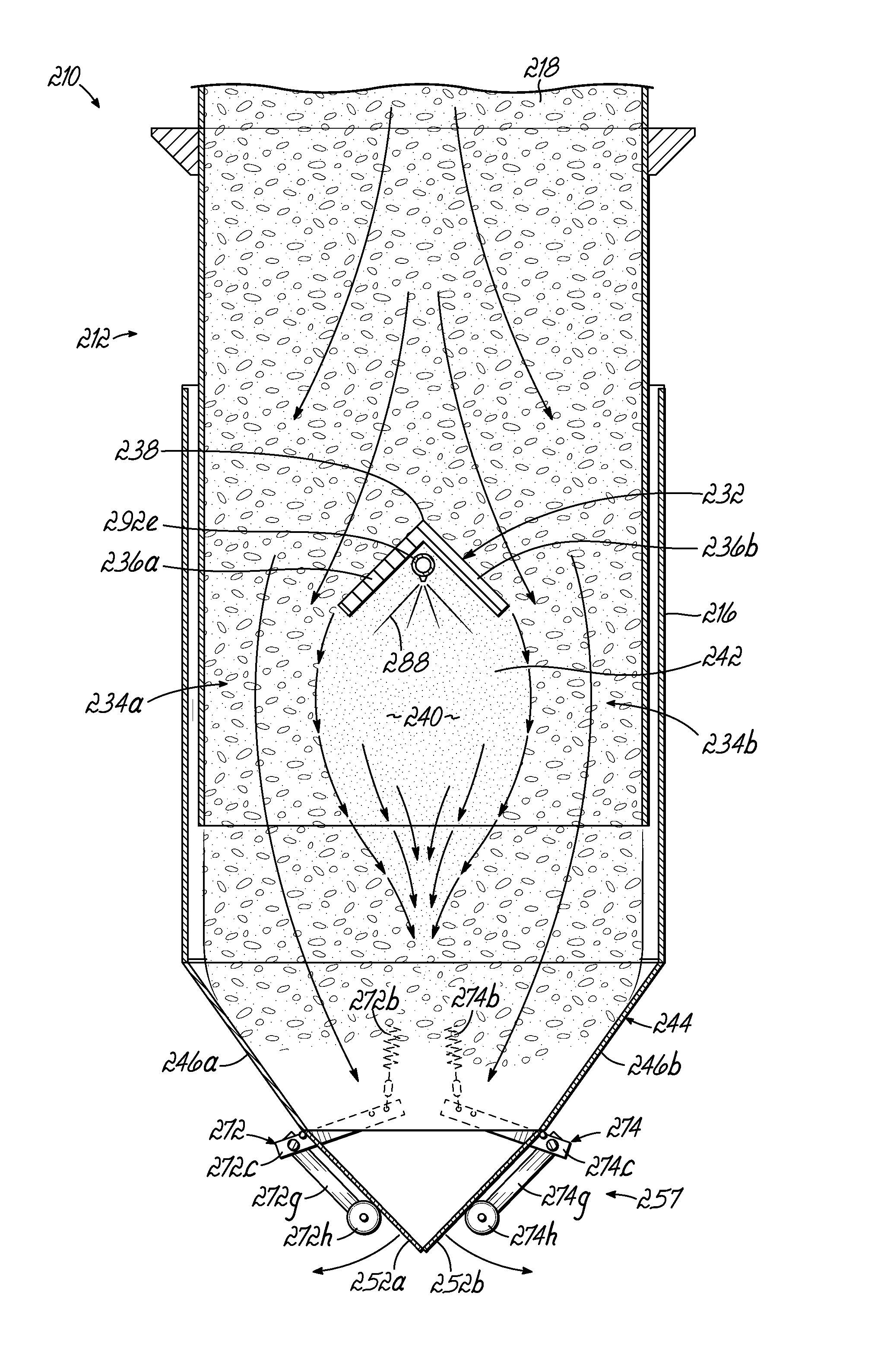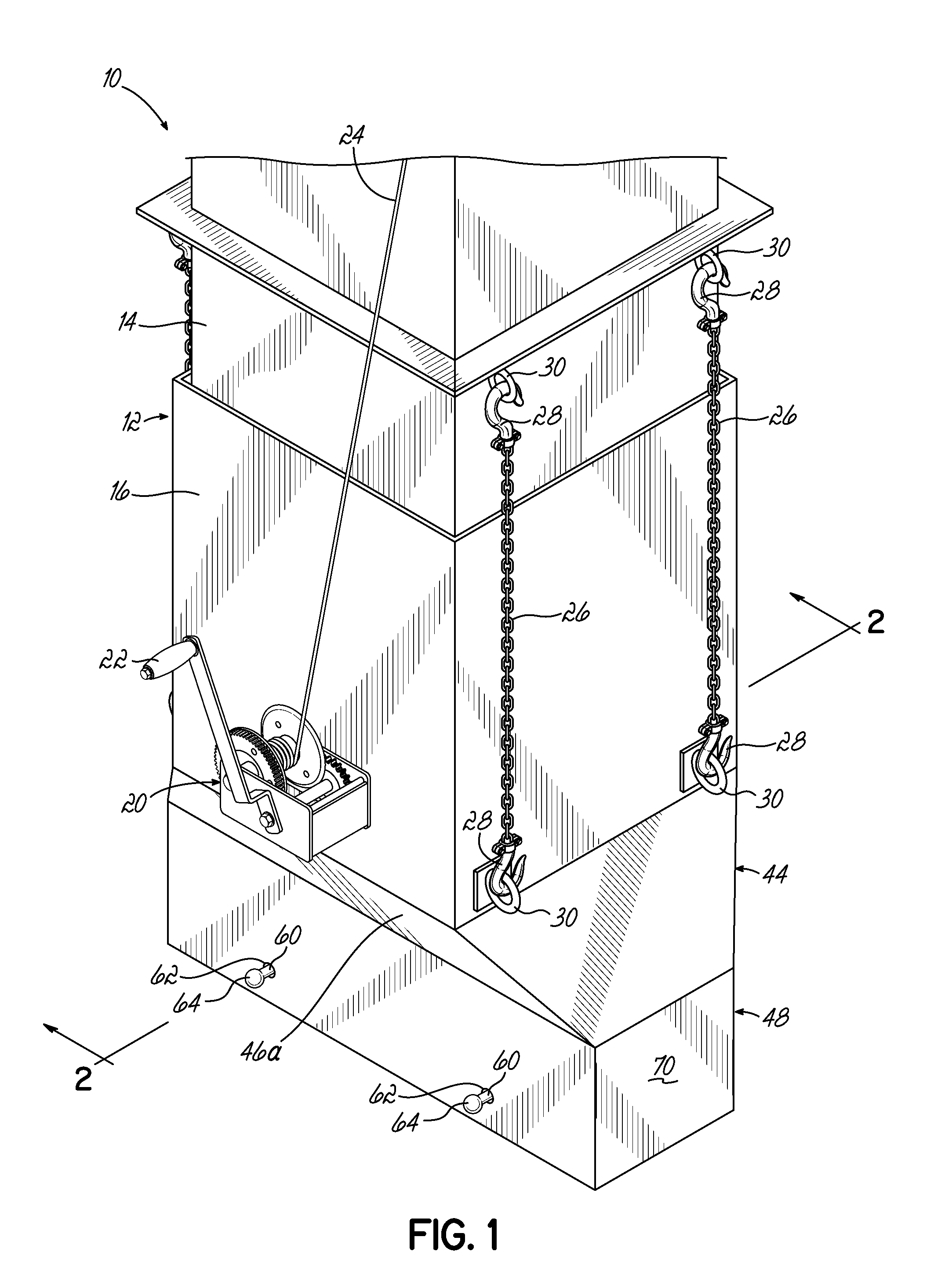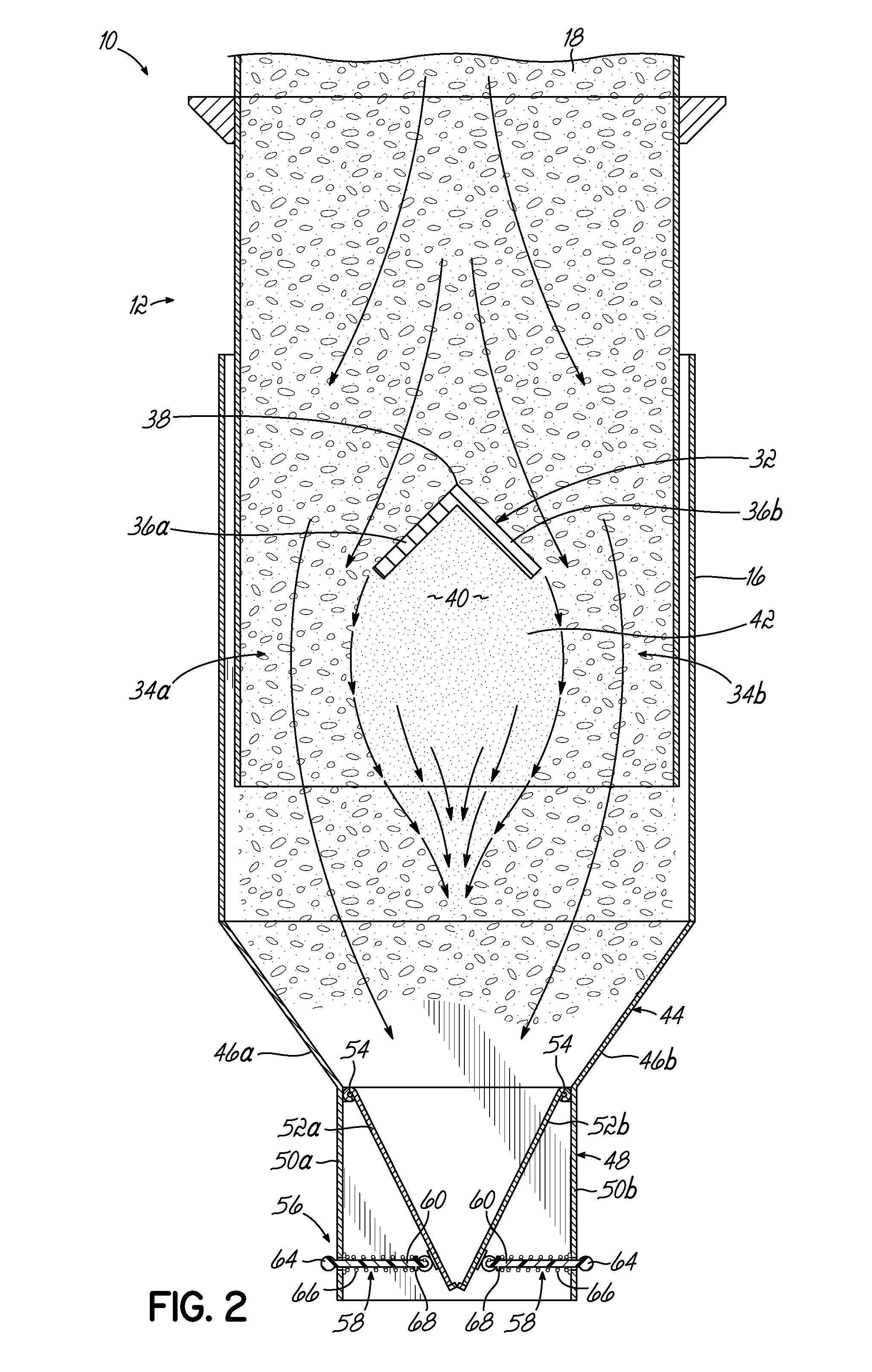Dustless spout assembly
a spout and assembly technology, applied in the direction of chutes, loading/unloading, transportation and packaging, etc., can solve the problems of dust, fines and dust, damage to grain and other particulate materials, etc., to reduce the dust escaping the flowing material and the effect of reducing the flow
- Summary
- Abstract
- Description
- Claims
- Application Information
AI Technical Summary
Benefits of technology
Problems solved by technology
Method used
Image
Examples
Embodiment Construction
[0033]Referring to FIG. 1, a perspective view of one embodiment of a dustless spout assembly 10 according to this invention is shown. Cross-sectional views of the spout assembly 10 are likewise shown in FIGS. 2-3B. The assembly 10 includes an upper chute section 12 formed by an upper and a lower chute 14, 16 telescopically mated together. While two chutes are shown and described, this invention is not limited to two chutes and only one chute or more than two chutes can be used. The upper chute 14 is received within the lower chute 16 as shown in FIG. 2. In one embodiment, the outer perimeter dimension of the lower chute 16 is 23 inches by 23 inches and the similar dimensions of the upper chute 14 are likewise designed to matingly fit within the lower chute 16. In operation, the spout assembly 10 is adapted for the transfer of grain, corn or other particulate material 18 in a generally vertical downward direction from a supply of grain 18 into a rail car, cargo hold or other receptac...
PUM
 Login to View More
Login to View More Abstract
Description
Claims
Application Information
 Login to View More
Login to View More - R&D
- Intellectual Property
- Life Sciences
- Materials
- Tech Scout
- Unparalleled Data Quality
- Higher Quality Content
- 60% Fewer Hallucinations
Browse by: Latest US Patents, China's latest patents, Technical Efficacy Thesaurus, Application Domain, Technology Topic, Popular Technical Reports.
© 2025 PatSnap. All rights reserved.Legal|Privacy policy|Modern Slavery Act Transparency Statement|Sitemap|About US| Contact US: help@patsnap.com



